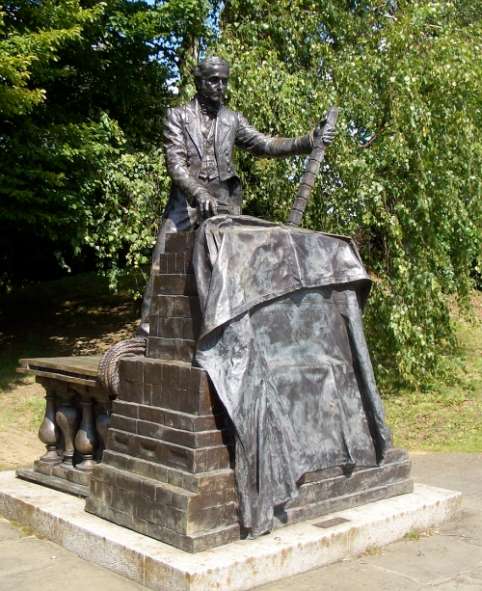According to the Census of 1851, there were in London fifty-seven firms of builders employing fifty or more men, and nine firms were reported as employing more than 200 men. In 1872, at the time of the great lock-out of their workers by the London master builders, the secretary of the Central Association of Master Builders claimed that there were "fully 250 large building establishments" in London. A fair proportion of these firms were probably organized on [Thomas] Cubitt’s model — particularly the largest of them.
Firms of such a size and character were quite large by the standards of industrial Britain in the mid-nineteenth century. In the space of half a century an industry which had been organized primarily on a craft basis had, without the stimulus of any important technological advances, thrown up a group of large, complex, and markedly capitalist businesses. — E. W. Cooney 173

Thomas Cubitt, detail of his statue in Dorking by William Fowke.
Individual Firms
- Thomas and Lewis Cubbit
- Lucas Brothers
- George Myers
- Sir John Kelk
- Henry Lovatt
- Sir Chafrles James Freake
Links to related material
- The Great Housing Boom
- Homes in the City and Suburbs
- Country Mansions, New and Improved
- Architectural Books, and Professional and Trade Journals
- Styles in Domestic Architecture
Bibliography
Anderson, Christy. Review of James Ayres's Building the Georgian City. The Journal of the Society of Architectural Historians. 59: 2 (June 2000). 252-54.
Cooney, E. W. "The Origins of the Victorian Master Builders." The Economic History Review 8, no. 2 (1955): 167–76.
Halliday, Stephen. Making the Metropolis: Creators of Victoria's London. Derby: Breedon, 2003.
History RICS (Royal Institution of Chartered Surveyors). Web. 7 November 2021
ICS (Institute of Civil Engineers): History, Web. 7 November 2021.
Long, Helen C. Victorian Houses and Their Details: The Role of Publications in Their Building and Decoration. Oxford: Architectural Press, 2002.
Powell, Christopher G. The British Building Industry since 19800: An Economic History. 2nd ed. Abingdon: Spon, 1996.
Spencer-Silver, Patricia. Pugin's Builder: The Life and Work of George Myers. Hull: University of Hull Press, 1993.
Created 7 November 2021